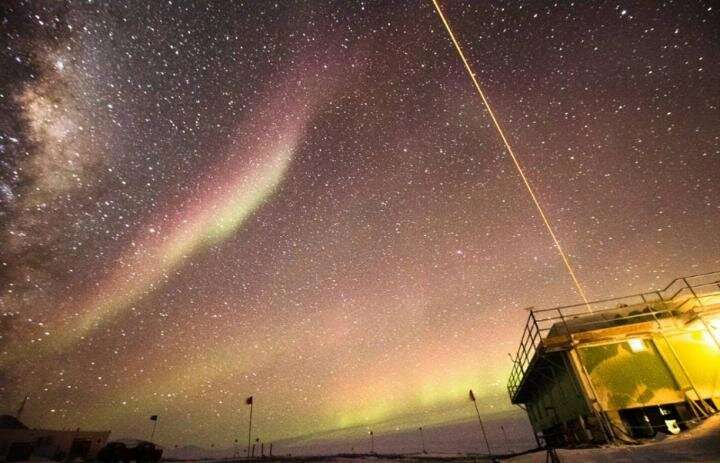Research team is first to observe new equatorial wind patterns in Antarctica

A CIRES-led team has uncovered a critical connection between winds at Earth's equator and atmospheric waves 6,000 miles away at the South Pole. The team has found, for the first time, evidence of a Quasi-Biennial Oscillation (QBO)—an atmospheric circulation pattern that originates at the equator—at McMurdo, Antarctica.
The discovery highlights how winds in the deep tropics affect the remote South Pole, in particular the polar vortex, which can trigger outbreaks of cold weather patterns in mid latitudes. Scientists will be able to use this information to better understand the planet's weather and climate patterns and fuel more accurate atmospheric models, the authors say.
"We have now seen how this atmospheric pattern propagates from the equator all the way to the high latitudes of Antarctica, showing how these far-away regions can be linked in ways we didn't know about before," said Zimu Li, a former CIRES research assistant who did this work at the University of Colorado Boulder, and lead author of the study out today in the Journal of Geophysical Research: Atmospheres.
"This can better our understanding of how large-scale atmospheric circulation works, and how patterns in one area of the world can ripple across the entire globe," said Xinzhao Chu, CIRES Fellow, professor in the Ann & H.J. Smead Department of Aerospace Engineering Sciences at the University of Colorado Boulder, and corresponding author on the new work.
Every two years or so, the QBO causes the stratospheric winds at Earth's equator to switch direction, alternating between easterly and westerly. Lynn Harvey, a researcher at CU's Laboratory for Atmospheric and Space Physics (LASP) and a coauthor on the study, helped the team study the polar vortices, the massive swirls of cold air that spiral over each of Earth's poles. The study reports that the Antarctic vortex expands during the QBO easterly phase and contracts during the westerly phase. The team suspects that when the QBO changes the polar vortex behavior, that, in turn, affects the behavior of atmospheric waves called gravity waves, which travel across different layers of the atmosphere. They identified specific kinds of changes in those gravity waves: The waves are stronger during the easterly period of the QBO and weaker when the QBO is westerly.
For the last nine years, members of Chu's lidar team have spent long seasons at McMurdo Station, Antarctica, braving 24-hour darkness and frigid temperatures to operate custom lasers and measure patterns in Earth's atmosphere. These long-term measurements, along with 21 years of NASA MERRA-2 atmospheric records, were critical to the new findings. Each QBO cycle takes years to complete, so long-term data streams are the only way to identify interannual connections and patterns.
"Atmospheric scientists can use this information to improve their models—before this nobody really knew how QBO impacts gravity waves in this polar region," said Xian Lu, researcher at Clemson University and a coauthor on the study. "Researchers can use this information to better model and predict climate, including the variability of atmosphere and space and long-term change."
More information: Zimu Li et al, First Lidar Observations of Quasi‐Biennial Oscillation‐Induced Interannual Variations of Gravity Wave Potential Energy Density at McMurdo via a Modulation of the Antarctic Polar Vortex, Journal of Geophysical Research: Atmospheres (2020). DOI: 10.1029/2020JD032866
Journal information: Journal of Geophysical Research - Atmospheres
Provided by University of Colorado at Boulder

















